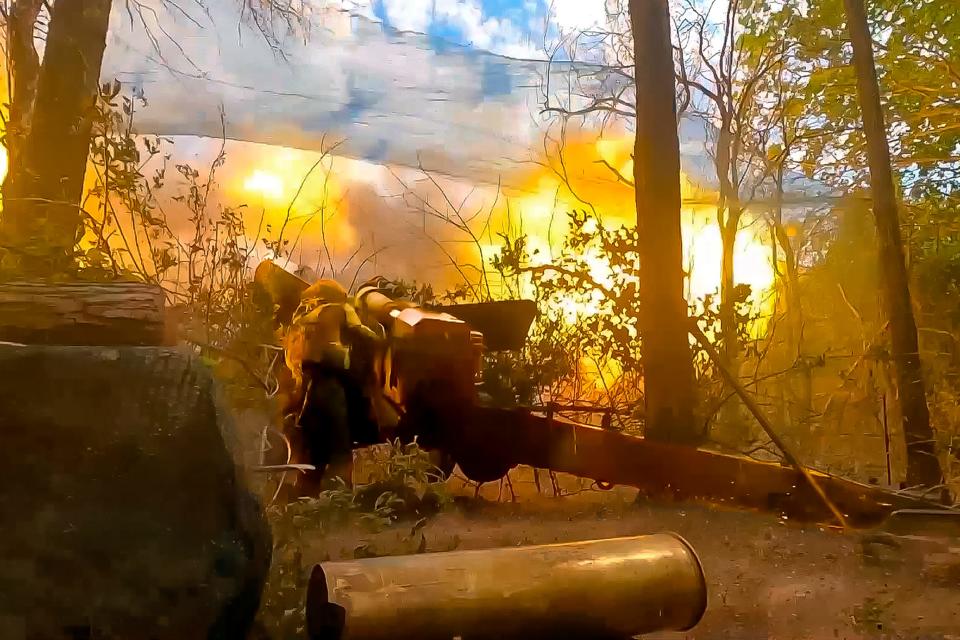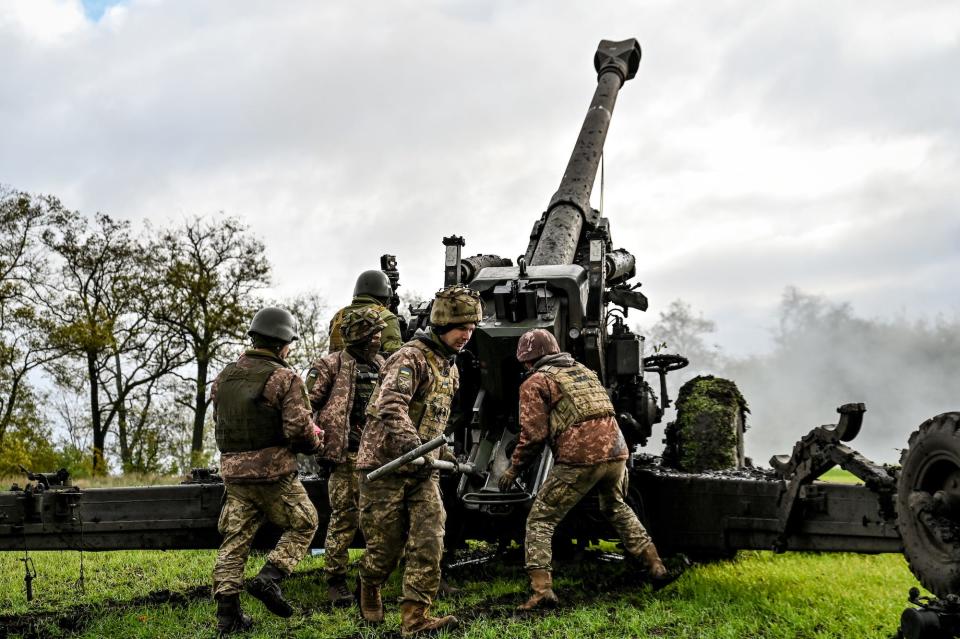Russia rebuilt its war machine 'faster than we expected' and is now cranking out artillery shells at a breakneck pace, NATO defense official says
Russia's "war-stage" economy has been rebuilt very fast, a NATO defense chief said Tuesday.
Moscow is now making artillery ammunition at a much higher annual rate than before the Ukraine war.
"They are moving quite fast," Lithuania's minister of national defense warned.
Russia has successfully rebuilt its "war-stage" economy much faster than expected, and it is now cranking out far more artillery ammunition than it was prior to the beginning of the Ukraine war, a NATO defense chief said Tuesday.
Before Russia's full-scale invasion of Ukraine in February 2022, Moscow was producing up to 400,000 152mm rounds per year. These can be fired from Soviet-era towed howitzer cannons. But that figure has since swelled to 2 million rounds annually, according to Laurynas Kasčiūnas, Lithuania's minister of national defense.
"They are moving quite fast," Kasčiūnas said during a roundtable discussion hosted by POLITICO and German television outlet Welt on the sidelines of the NATO summit in Washington, DC.
Russian President Vladimir Putin has taken significant steps to move the country's economy onto what experts have described as a "Soviet-style" war footing. This past spring, for instance, he reshuffled Moscow's military leadership to boost defense-industrial base output and support the mass production of weaponry.

Despite international efforts to inflict economic pain on Russia over its war, through actions like sanctions, Kasčiūnas said Moscow's "war-stage economy" has recovered "faster than we expected." Top US officials and generals have offered similar assessments about the country's military power.
Increased artillery shell output is a key indicator. Moscow's output of 152mm shells dwarfs production estimates for the NATO-standard 155mm shells. In Europe, for instance, the annual production rate for this type of artillery munition is less than 600,000 rounds, and in the US, it is lower than 350,000.
Kasčiūnas said Putin has heavily invested a lot of the country's GDP — reportedly nearly 7% — into military spending but will need to keep the economy on this track because resorting back to what it was before the war would lead to a "crisis."
"For that, he needs to have an enemy — to have challenges," Kasčiūnas said. "Now, it's Ukraine. Maybe after that, somebody else."

Kasčiūnas delivered his remarks alongside Estonian Defense Minister Hanno Pevkur and Latvian Defense Minister Andris Sprūds. On NATO's front line, the three Baltic nations have been staunch supporters of Ukraine and persistent advocates on security assistance to Kyiv, fearing that Russia may target them in the future.
Having also been the target of hybrid attacks by neighboring Russia, the Baltic countries have long pushed for increased defense spending among NATO members and are vocal in ensuring that the military alliance has the necessary capabilities to deter and defend against a broader Russian assault against Europe.
Kasčiūnas said that in order to build a credible defensive regime that can effectively deter Russia, it's necessary to fill capability gaps like air defense and long-range munitions. The Baltics already have several initiatives underway to help address these shortcomings and are among NATO's top defense spenders as a share of GDP, but there's still more to be done, the officials noted on Tuesday.
"We are moving forward, but only little by little," Kasčiūnas said.
Read the original article on Business Insider

